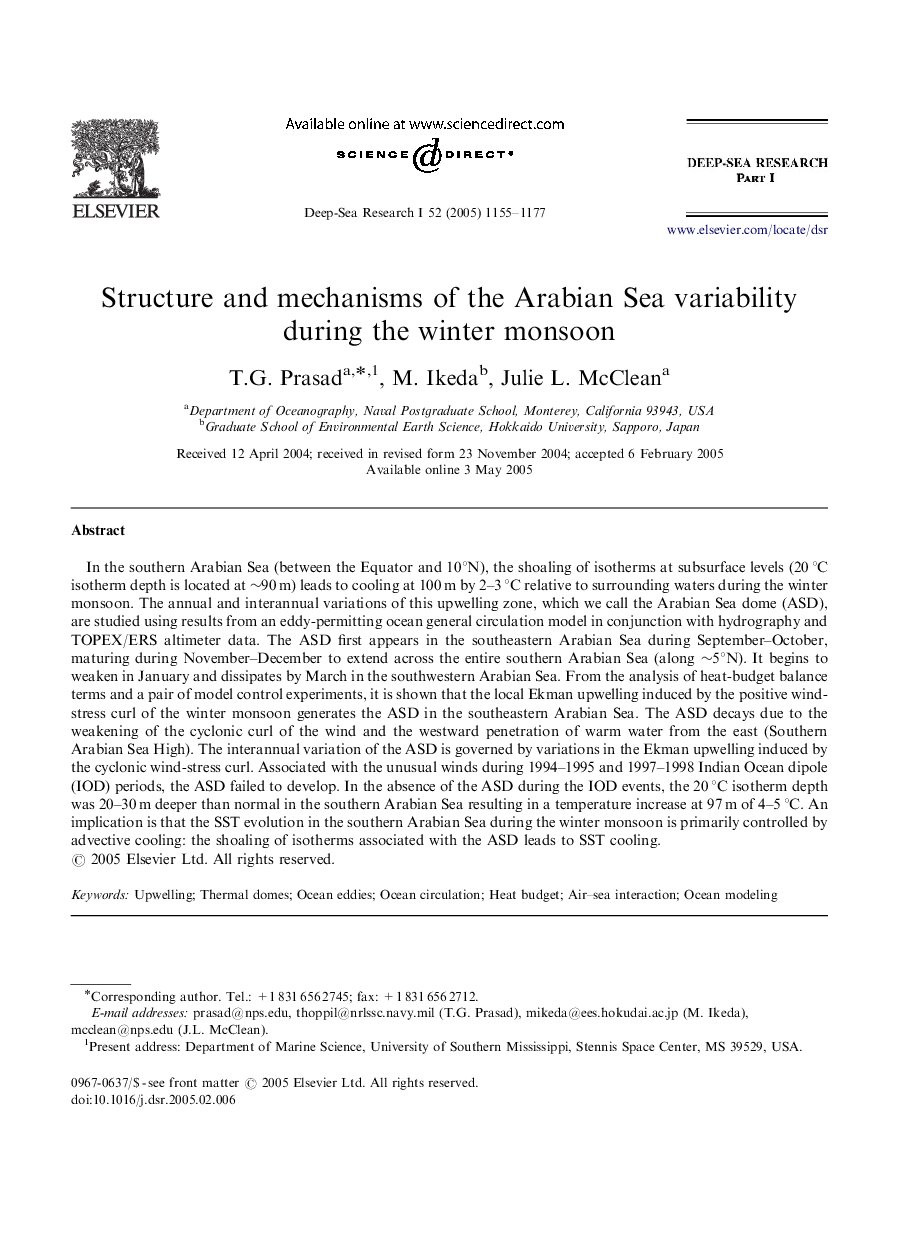| کد مقاله | کد نشریه | سال انتشار | مقاله انگلیسی | نسخه تمام متن |
|---|---|---|---|---|
| 9479777 | 1326158 | 2005 | 23 صفحه PDF | دانلود رایگان |
عنوان انگلیسی مقاله ISI
Structure and mechanisms of the Arabian Sea variability during the winter monsoon
دانلود مقاله + سفارش ترجمه
دانلود مقاله ISI انگلیسی
رایگان برای ایرانیان
کلمات کلیدی
موضوعات مرتبط
مهندسی و علوم پایه
علوم زمین و سیارات
زمین شناسی
پیش نمایش صفحه اول مقاله

چکیده انگلیسی
In the southern Arabian Sea (between the Equator and 10°N), the shoaling of isotherms at subsurface levels (20 °C isotherm depth is located at â¼90 m) leads to cooling at 100 m by 2-3 °C relative to surrounding waters during the winter monsoon. The annual and interannual variations of this upwelling zone, which we call the Arabian Sea dome (ASD), are studied using results from an eddy-permitting ocean general circulation model in conjunction with hydrography and TOPEX/ERS altimeter data. The ASD first appears in the southeastern Arabian Sea during September-October, maturing during November-December to extend across the entire southern Arabian Sea (along â¼5°N). It begins to weaken in January and dissipates by March in the southwestern Arabian Sea. From the analysis of heat-budget balance terms and a pair of model control experiments, it is shown that the local Ekman upwelling induced by the positive wind-stress curl of the winter monsoon generates the ASD in the southeastern Arabian Sea. The ASD decays due to the weakening of the cyclonic curl of the wind and the westward penetration of warm water from the east (Southern Arabian Sea High). The interannual variation of the ASD is governed by variations in the Ekman upwelling induced by the cyclonic wind-stress curl. Associated with the unusual winds during 1994-1995 and 1997-1998 Indian Ocean dipole (IOD) periods, the ASD failed to develop. In the absence of the ASD during the IOD events, the 20 °C isotherm depth was 20-30 m deeper than normal in the southern Arabian Sea resulting in a temperature increase at 97 m of 4-5 °C. An implication is that the SST evolution in the southern Arabian Sea during the winter monsoon is primarily controlled by advective cooling: the shoaling of isotherms associated with the ASD leads to SST cooling.
ناشر
Database: Elsevier - ScienceDirect (ساینس دایرکت)
Journal: Deep Sea Research Part I: Oceanographic Research Papers - Volume 52, Issue 7, July 2005, Pages 1155-1177
Journal: Deep Sea Research Part I: Oceanographic Research Papers - Volume 52, Issue 7, July 2005, Pages 1155-1177
نویسندگان
T.G. Prasad, M. Ikeda, Julie L. McClean,